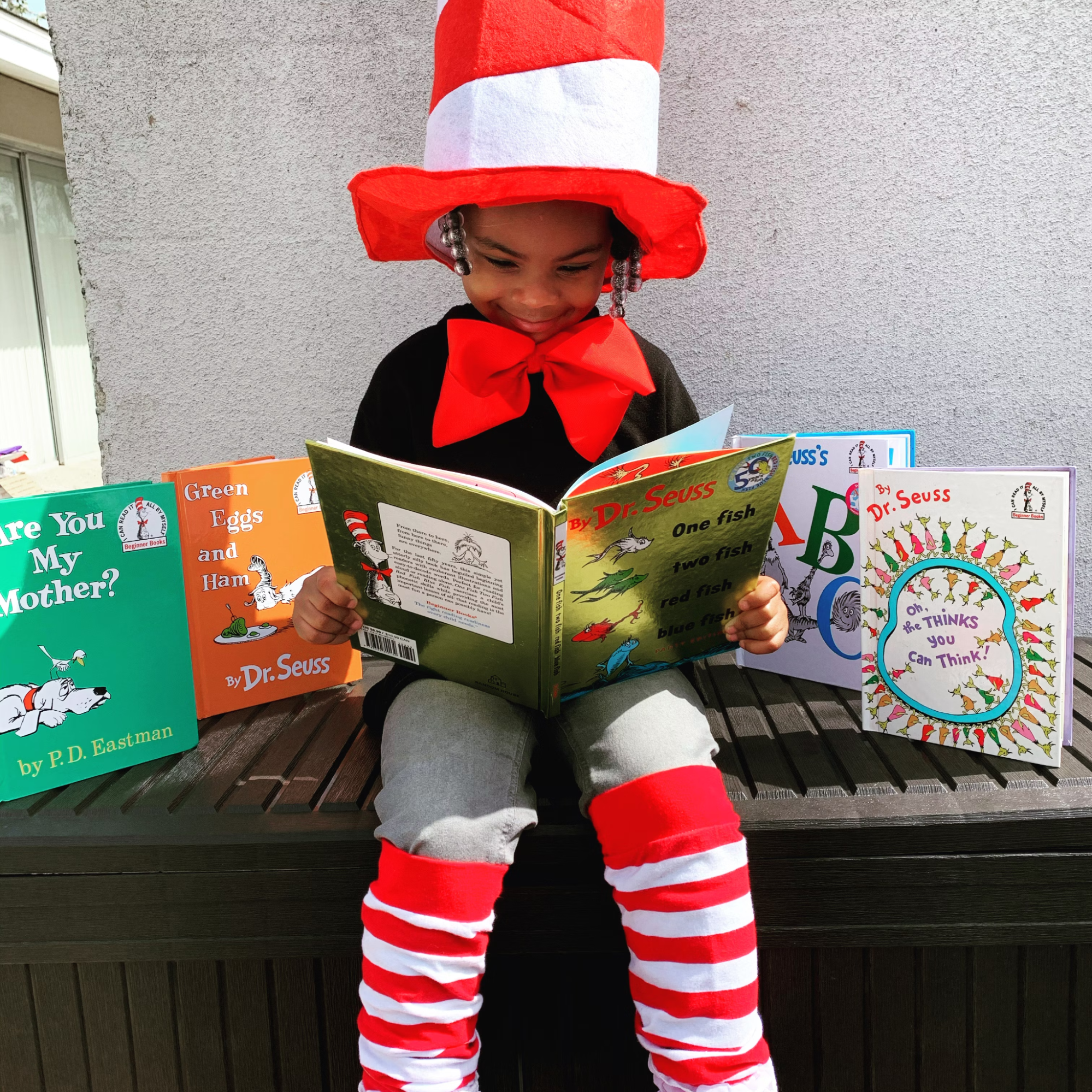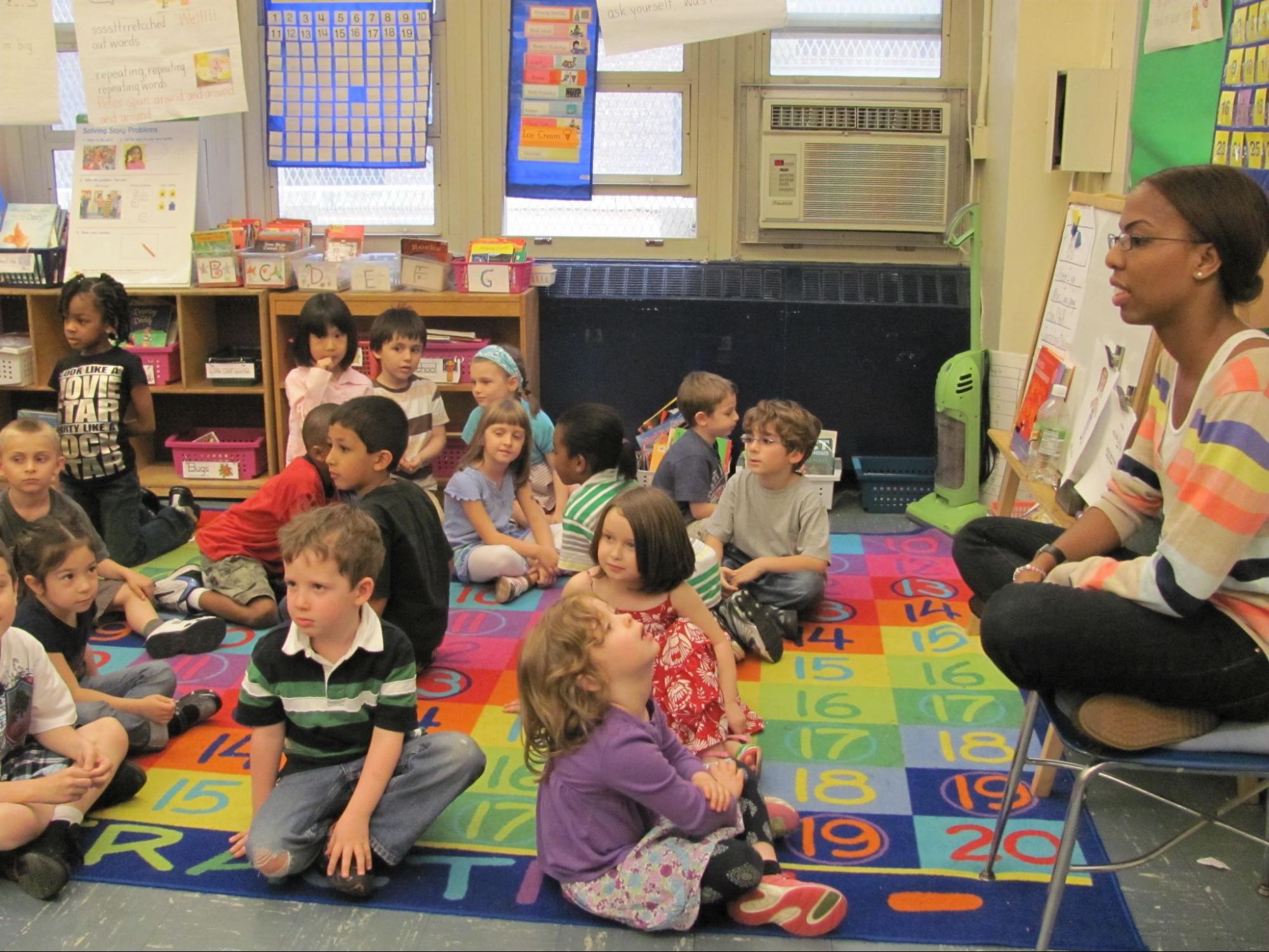7.2 Cognitive Development
Preschool-aged children continue to build upon the cognitive skills learned in infancy and toddlerhood. As they interact more independently with their environments, preschoolers use their keen sense of observation and questioning to expand the schemas created in the first 3 years of their lives. In the early years, a child’s brain and cognitive understanding is mostly dependent on the interactions with their caregivers, along with social and environmental conditions. During the preschool years, cognitive development is accelerated through a child’s own imagination, play, and exploration.
We will see a variety of new skills and competencies emerge in the preschool years, such as a child’s ability to understand aspects of time and sequence. Preschoolers can remember past events and talk about future events. They also become more adept at understanding and following instructions due to their expanding memory capabilities. There is a notable emergence of pre-academic skills, such as counting, rhyming, grouping, and matching. Let’s take a closer look at preschooler cognitive development by first examining brain growth.
The Growing Brain
A child’s brain experiences a growth spurt during the preschool years as they learn new skills and are exposed to new stimuli. Not only does the brain increase in complexity, but it also increases in size. At 3 years old, a child’s brain is about 80 percent of its adult size. By 5 years of age, it will be around 90 percent. Brain research tells us that “the preschool years can be thought of as a developmental period generally dominated by dynamic and robust progressive processes, with an emphasis on growth, expansion, ‘construction,’ and ‘blossoming’ that will later be pruned and tuned with continued maturation and experience” (Brown & Jernigan, 2012).
One of the most dramatic changes that happens during the preschool years is growth within the prefrontal cortex. The prefrontal cortex is an area of the brain located at our foreheads that is responsible for a number of important skills. The brain also experiences improvement in other regions, such as the corpus callosum, which is a structure that connects the two hemispheres of the brain. This growth results in improved coordination between the two sides, which helps children perform complex functions (Tanaka-Arakawa et al., 2015). We can witness this change when preschoolers become more physically coordinated and in the improvements we see in cognitive thinking skills.

Preschool-aged children experience a peak in executive functions and will continue to develop these into early adulthood (Center on the Developing Child, 2023). Executive functions are thought processes that include working memory, attention, problem-solving, and impulse control. These prefrontal cortex functions are crucial in helping children complete tasks, plan and make decisions, and control their behavior. Caregivers are a child’s first teacher, and they actively teach children how to manage themselves through modeling and practicing skills. Self-regulation skills are strategies that are used to manage thoughts, behaviors, and feelings. They are key in the development of healthy executive functions.
Responsive caregivers who give their children attention and help them sustain attention through positive interactions are providing a framework for executive functioning in the early years. Self-regulating skills take considerable practice and time to master, but preschool-aged children can build self-regulating behaviors when given ample opportunities by their caregivers. Caregivers should ensure that children have plenty of time to play, that there are established routines at home, and that they scaffold learning for their children, especially when encountering something new.
Children who do not have the opportunity to practice important brain skills or who experience disruptions in the preschool years can develop delays in their learning or social functioning. For example, a child living in extreme poverty may not have access to adequate nutrition to support the developing brain. This can lead to delayed growth or impairment. Similarly, adverse experiences, such as exposure to violence and abuse, create stress within the developing child. This type of toxic stress can “disrupt brain architecture and impair the development of executive functions” (Center on the Developing Child, 2023).
In Chapter 5, we learned that young children’s brains are highly plastic, which allows them to adapt to environmental factors and new experiences. Not all adaptations are necessarily good for the developing child. While plasticity is an important brain process that prepares children for their environments, it can also lead to changes within the brain that impact memory and other important cognitive functions. For example, the brain of a child exposed to constant threats will rewire itself for faster activation of fight, flight, or freeze responses. This can lead to increased anxiety, depression, and stress in later childhood and adulthood (Herzog & Schmahl, 2018).
The use of screen-based media continues to be a factor to consider in brain development. We learned that infants and toddlers are spending more time in front of screens via television, phones, and tablets. A report shows that preschoolers spend a daily average of 2.5 to 3 hours on a screen of some kind (Rideout & Robb, 2020). While screen time in isolation isn’t necessarily going to damage the brain, it is important to consider the cumulative impact, or the long-term effect, of screen use from infancy through the preschool years. Children who experience delays early on may experience even more delays in later development.
When children are in front of a screen, especially without parental engagement, they are missing out on important interactions that help strengthen vital brain connections. Preschoolers are becoming increasingly independent but continue to need positive interactions from the adults in their lives. Most importantly, meaningful child-adult engagement, such as reading or playing together, is key to supporting healthy brain growth.
Learning and Memory
As mentioned earlier, preschoolers will see increased development in attention skills and executive functions. They will also see an increase in working memory capacity. Information processing researchers note that the preschool years also bring improvements in memory strategies, memory accuracy, and autobiographical memory. This developmental period is seen by many researchers as a crucial time period in memory development (Posner & Rothbart, 2007).
Sensory memory (also called the sensory register) is the first stage of the memory system. Sensory memory stores raw sensory input in the brain for a very brief duration, essentially only long enough for the brain to register and process the information. Studies of auditory sensory memory show that it lasts about one second in 2-year-olds, 2 seconds in 3-year-olds, more than 2 seconds in 4-year-olds, and 3–5 seconds in 6-year-olds (Glass et al., 2008). Other researchers have also found that young children hold sounds for a shorter duration than do older children and adults and that this deficit is not due to attentional differences between these age groups but reflects differences in the performance of the sensory memory system (Gomes et al., 1999).
The second stage of the memory system is short-term memory, also known as working memory. Working memory is the component of memory in which current conscious mental activity occurs. Working memory often requires conscious effort and adequate attention to function effectively. Due to increased capacity within the prefrontal cortex, preschoolers will see an increase in their short-term memory and executive functions. These self-regulatory processes, such as the ability to inhibit a behavior or cognitive flexibility, enable adaptive responses to new situations and facilitate the achievement of a specific goal.
A child shows higher executive functioning skills when the parents are more warm and responsive, use scaffolding when the child is trying to solve a problem, and provide cognitively stimulating environments for the child (Fay-Stammbach et al., 2014). For instance, scaffolding was positively correlated with greater cognitive flexibility at age 2 and inhibitory control at age 4 (Bibok et al., 2009). In a longitudinal study of 102 kindergarten children conducted by Schneider et al. (2009), the majority of children used no strategy to remember information, a finding that was consistent with previous research. As a result, their memory performance was poor compared to their abilities as they aged and started using more effective memory strategies.
The third type of memory is long-term memory, which is also known as permanent memory. A basic division of long-term memory is between declarative and nondeclarative memory. Declarative memories, sometimes referred to as explicit memories, are memories of facts or events that we can consciously recollect. Declarative memory is further divided into semantic and episodic memory. Semantic memories are memories of facts and knowledge that are not tied to a timeline. Episodic memories are tied to specific events in time. Nondeclarative memories, sometimes referred to as implicit memories, are typically automated skills that do not require conscious recollection.
Attention
Changes in attention have been described by many as the key to changes in memory (Nelson & Fivush, 2004; Posner & Rothbart, 2007). Attention is not a unified function but consists of sub-processes. The ability to switch our focus between tasks or external stimuli is called divided attention or multitasking. This is separate from our ability to focus on a single task or stimulus while ignoring distracting information, called selective attention. Different from these is sustained attention, or the ability to stay on task for long periods of time. Moreover, we also have attention processes that influence our behavior and enable us to inhibit a habitual or dominant response, and others that enable us to distract ourselves when upset or frustrated.
Young children (age 3–4) have considerable difficulty dividing their attention between two tasks. As a result, they often perform at levels equivalent to our closest relative, the chimpanzee, but by age 5, they have surpassed the chimp (Hermann et al., 2015; Hermann & Tomasello, 2015). Despite these improvements, 5-year-olds continue to perform below the level of school-age children, adolescents, and adults. Children’s ability with selective attention tasks improves as they age. However, this ability is also greatly influenced by the child’s temperament (Rothbart & Rueda, 2005), the complexity of the stimulus or task (Porporino et al., 2004), and whether the stimuli are visual or auditory (Guy et al., 2013).
Guy et al. (2013) found that children’s ability to selectively attend to visual information outpaced that of auditory stimuli. This may explain why young children cannot hear the teacher’s voice over the cacophony of sounds in the typical preschool classroom (figure 7.2) (Jones et al., 2015). Jones and his colleagues found that 4–7-year-olds could not filter out background noise, especially when its frequencies were close to those of the target sound. In comparison, 8–11-year-old children often performed similarly to adults.

Most measures of sustained attention typically ask children to spend several minutes focusing on one task while waiting for an infrequent event, while there are multiple distractors for several minutes. Berwid et al. (2005) asked children between the ages of 3 and 7 to push a button whenever a “target” image was displayed, but they had to refrain from pushing the button when a non-target image was shown (figure 7.3). The younger the child, the more difficulty they had maintaining their attention.

Licenses and Attributions for Cognitive Development
“Cognitive Development” by Christina Belli is licensed under CC BY 4.0.
“Learning and Memory” from Lifespan Development – A Psychological Perspective by Martha Lally and Suzanne Valentine-French is licensed under CC BY 4.0; moderate edits.
“Attention” from Lifespan Development – A Psychological Perspective by Martha Lally and Suzanne Valentine-French is licensed under CC BY 4.0; minor edits.
Figure 7.1. Photo by Catherine Hammond on Unsplash.
Figure 7.2. Image by Joint Base Charleston is in the public domain.
Figure 7.3. Image by Fabrice Florin is licensed under CC BY-SA 2.0.
a process by which children acquire and process information and then learn how to use it in their environment.

